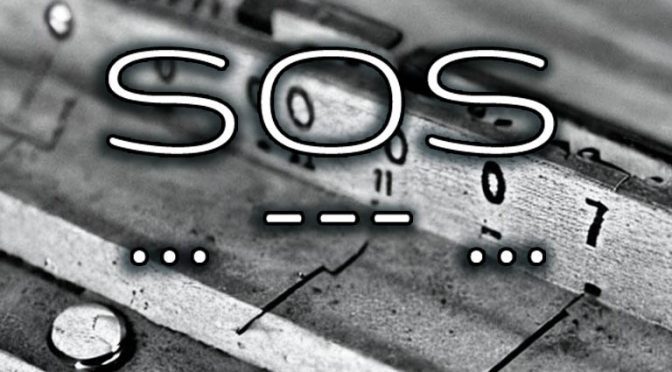In a world saturated with digital connections, it is easy to overlook the historical, yet still relevant forms of communication like Morse code and the SOS signal. These seemingly antiquated methods play a crucial role in emergency situations when more conventional communication mediums fail. In this comprehensive guide, we will explore the meaning of SOS, understand Morse code’s functionality, and learn how to spell “SOS”, “HELP”, and “FOOD” using this unique language of dots and dashes.
Understanding SOS
“SOS” is a universal distress signal, largely used in emergency situations where help is immediately required. Contrary to popular belief, it does not stand for any phrase such as “Save Our Souls” or “Save Our Ship”. It was chosen because it is easy to recognize in Morse code: three short signals, followed by three long signals, and then three short signals again:
...---...An SOS signal could be sent using light, sound, or any other medium that can produce long and short signals. The reason it’s widely recognized and effective is its distinct pattern, which, in a Morse code environment, is less likely to be naturally occurring, hence stands out as a clear call for help.
SOS: The International Distress Signal … – – – …
As previously explained, “SOS” is not an acronym but a universally recognizable signal of distress. In Morse code, each letter is represented as follows:
- “S” is “…”
- “O” is “- – -“
Thus, the entire SOS signal becomes:
...---...Composed of three short signals, followed by three long signals, then three short signals again.
The language of dots and dashes
Morse code, developed in the 19th century by Samuel Morse and Alfred Vail, is a system of communication that represents the alphabet and numbers through a series of dots, dashes, and spaces. Here’s how the basic system works:
- The letter “A” is “.-“
- The letter “B” is “-…”
- The number “1” is “.- – – -“
- The number “2” is “..- – -“
…and so on. Each letter and number has its own unique combination of dots (short signals) and dashes (long signals). Spaces are used to separate individual letters and words.
When and how to use Morse code
Despite being an old form of communication, Morse code still has practical applications. It’s widely used in amateur radio, certain areas of aviation, and notably, in emergency situations. It can be sent using light, sound, or even by tapping on a hard surface.
The universal SOS signal is the most recognized Morse code, so it’s important to know it and be able to use it when necessary. But it’s also worthwhile to familiarize yourself with the basics of Morse code. For instance, knowing how to spell “HELP” or “FOOD” can be lifesaving in certain situations.
To learn Morse code, start by memorizing the signals for each letter and number. Practice writing simple words and sentences, then gradually move onto more complex ones. Remember, in Morse code, consistency in the length of your dots, dashes, and spaces is key.
Spelling HELP in Morse code: …. . .-.. .- -.
Whether you’re stranded on a deserted island or lost in the woods, being able to send out a “HELP” signal could be the difference between life and death. Here’s how you spell “HELP” in Morse code:
- “H” is “….”
- “E” is “.”
- “L” is “.-..”
- “P” is “.- -.”
So, “HELP” would be spelled as:
.... . .-.. .--.Spelling FOOD in Morse code: ..-. – – – – – – -..
The ability to request “FOOD” is another critical skill that could save your life in certain emergency situations. Here’s how you spell “FOOD” in Morse code:
- “F” is “..-.”
- “O” is “- – -“
- “O” is “- – -“
- “D” is “-..”
Therefore, “FOOD” in Morse code would be:
..-. --- --- -..-.-. – – – -. -.-. .-.. ..- … .. – – – -. (Conclusion)
The relevance of Morse code and the SOS signal extends beyond their historical significance. They are practical tools of communication that can potentially save lives in dire situations. Despite our reliance on digital technology, knowing these simple yet essential Morse codes – for “SOS”, “HELP”, and “FOOD” – is a skill worth learning. After all, it’s always better to be prepared for the unexpected, as these tools could serve as lifelines when other communication methods fail.

